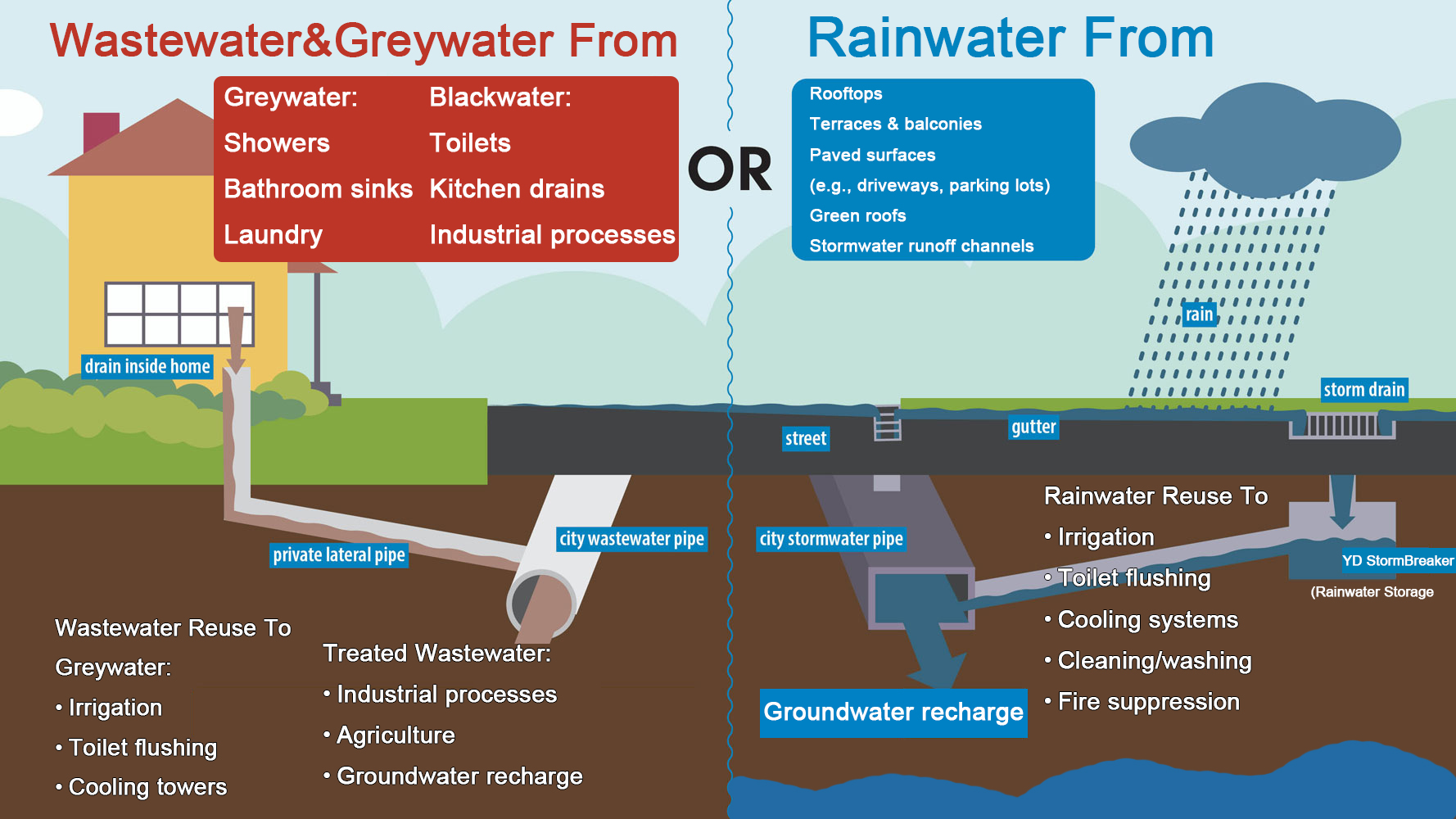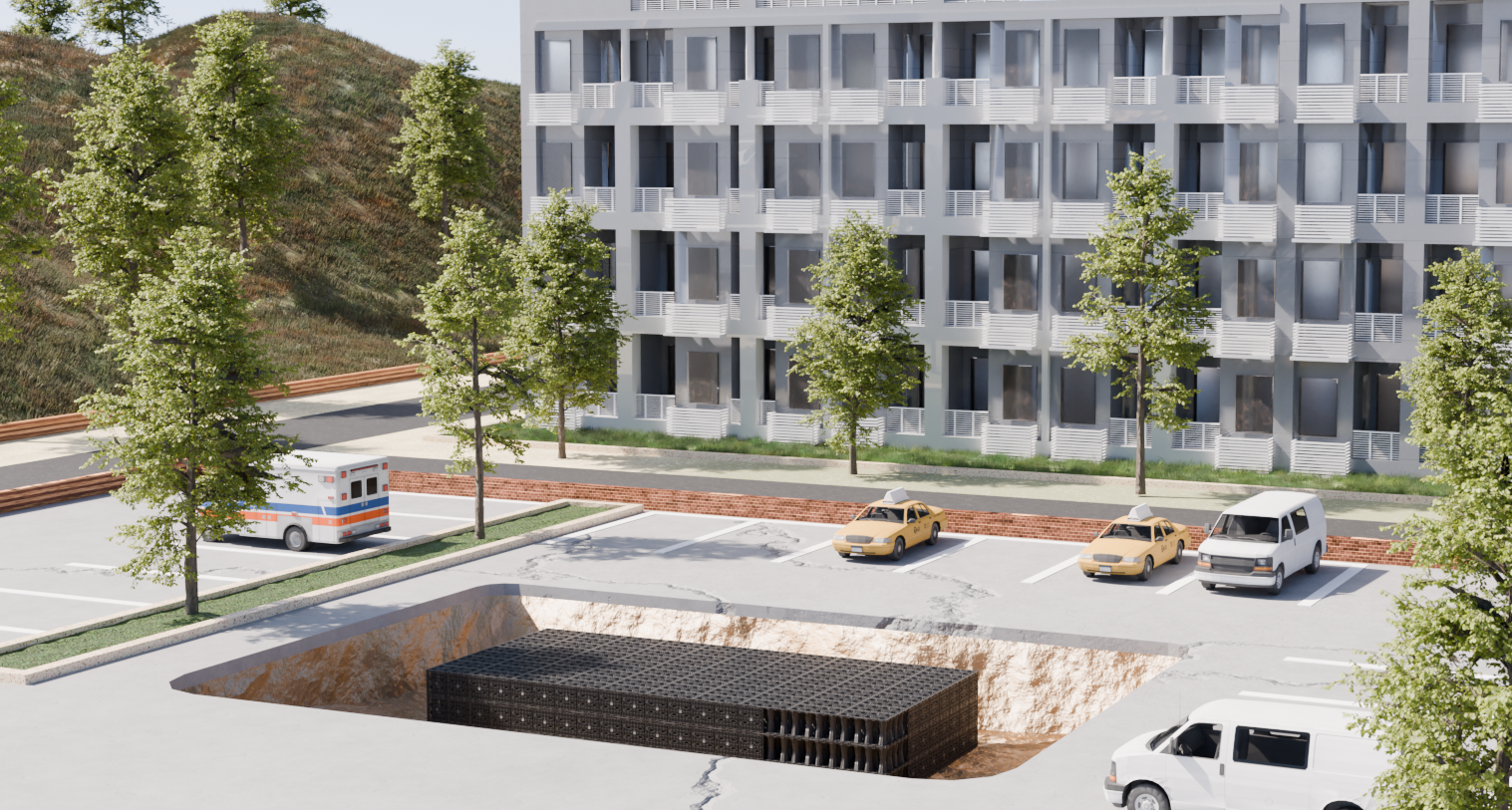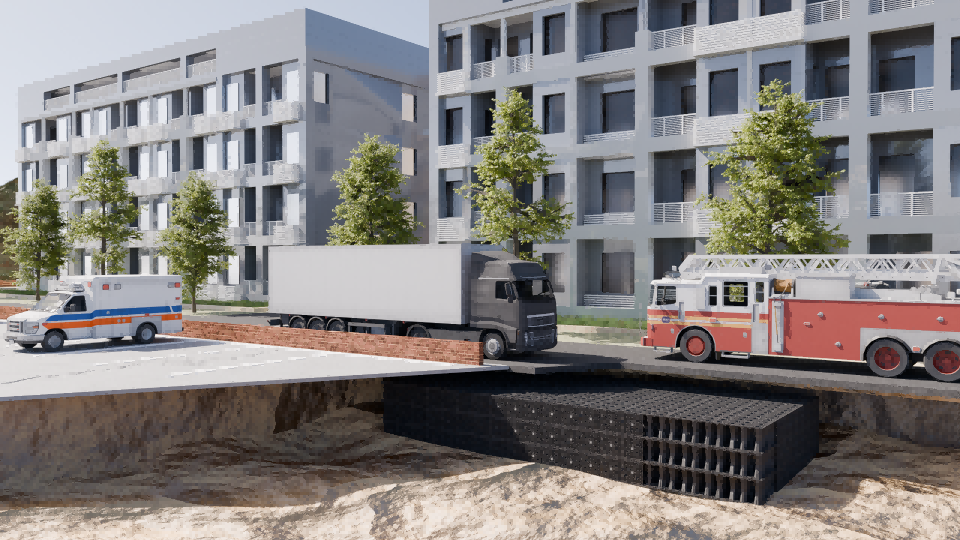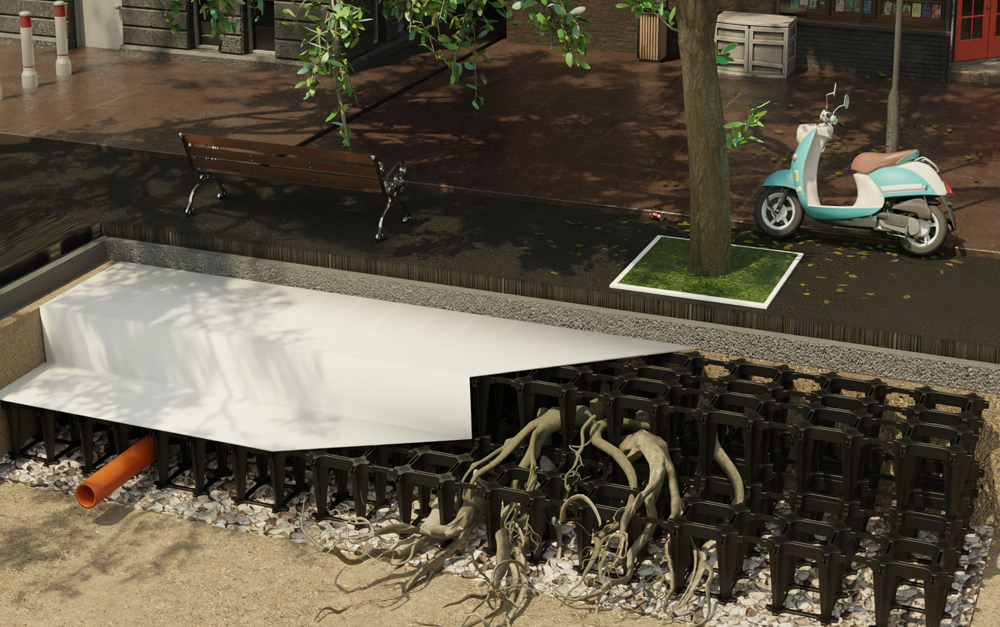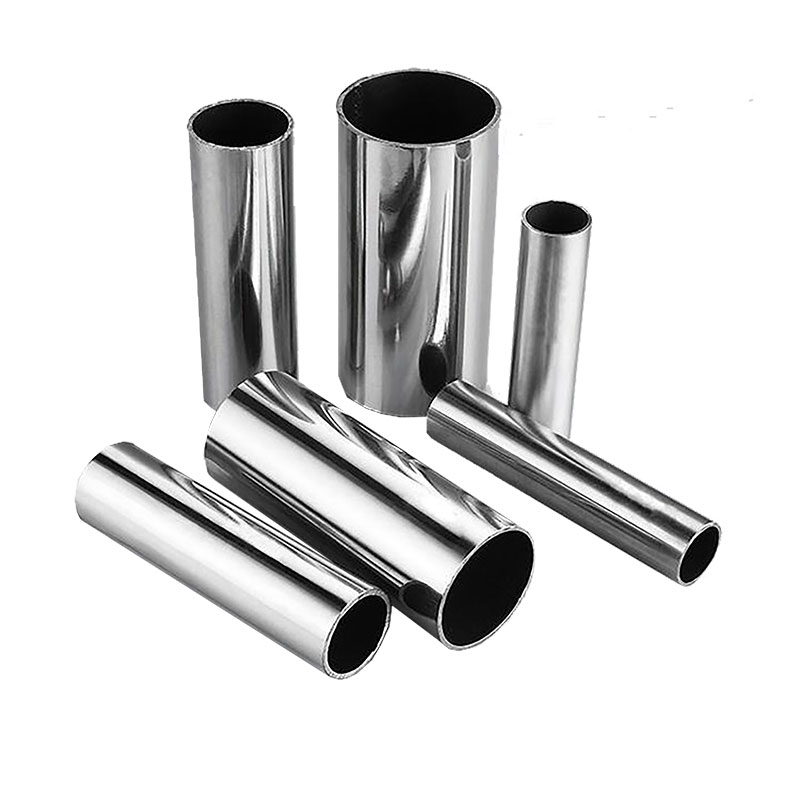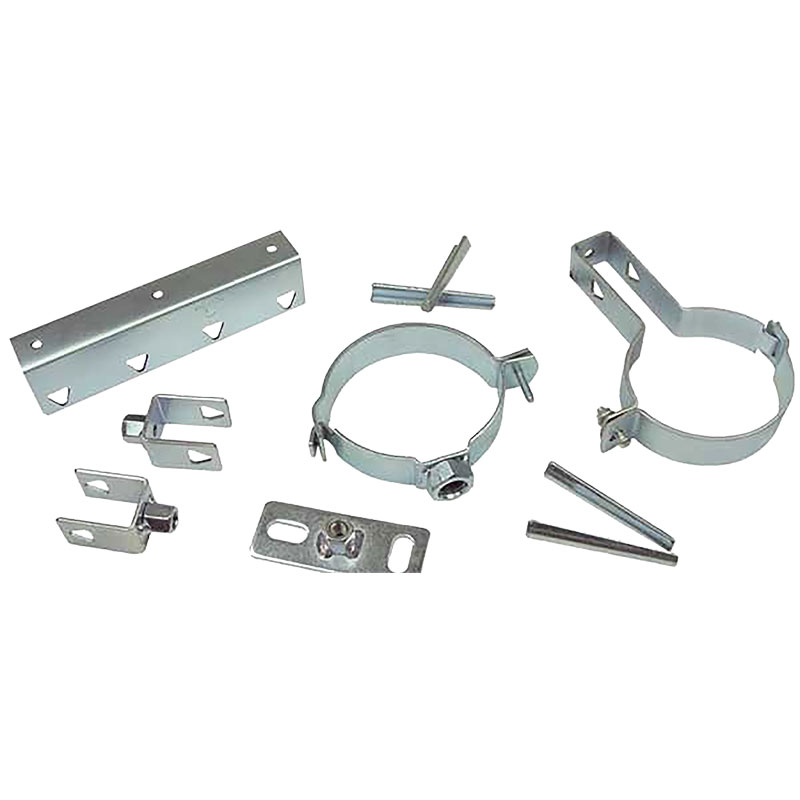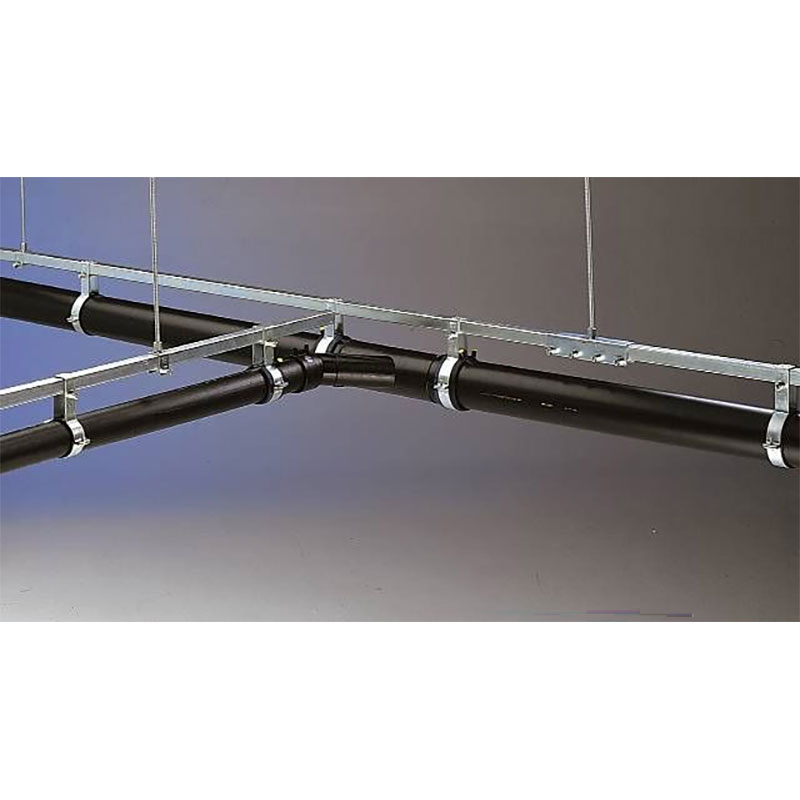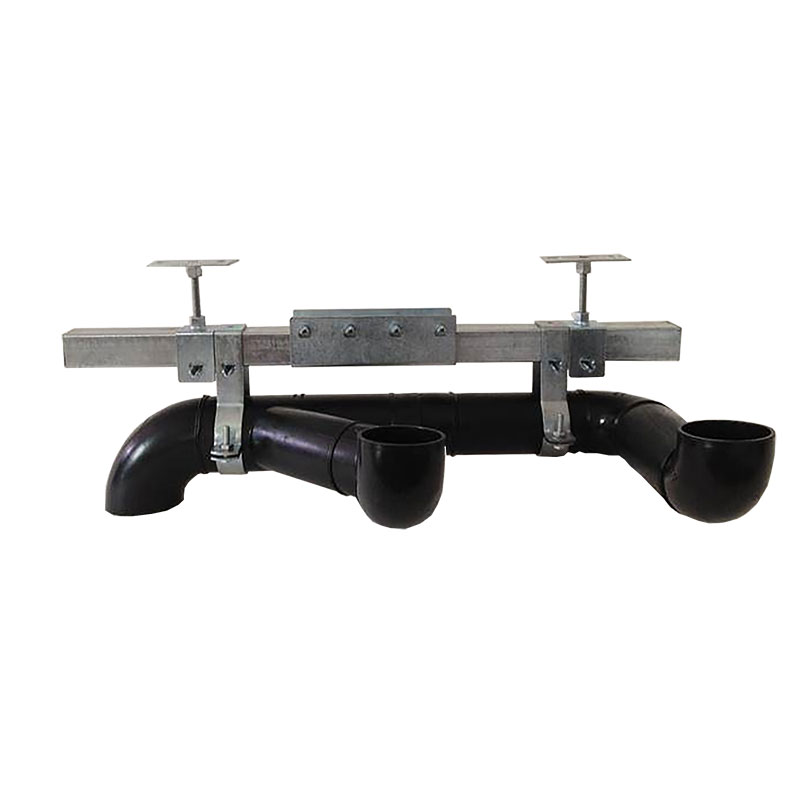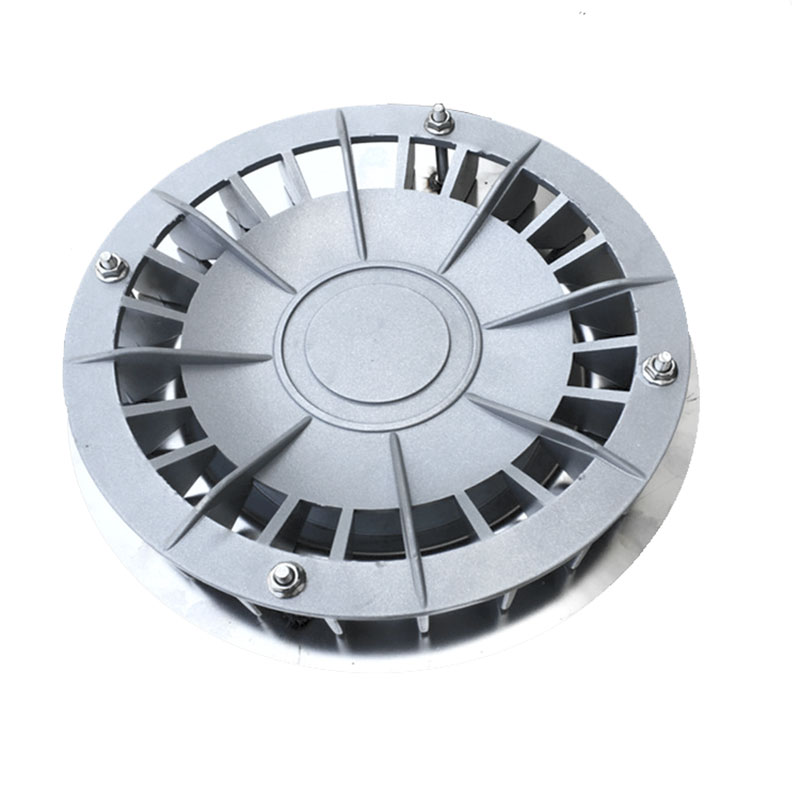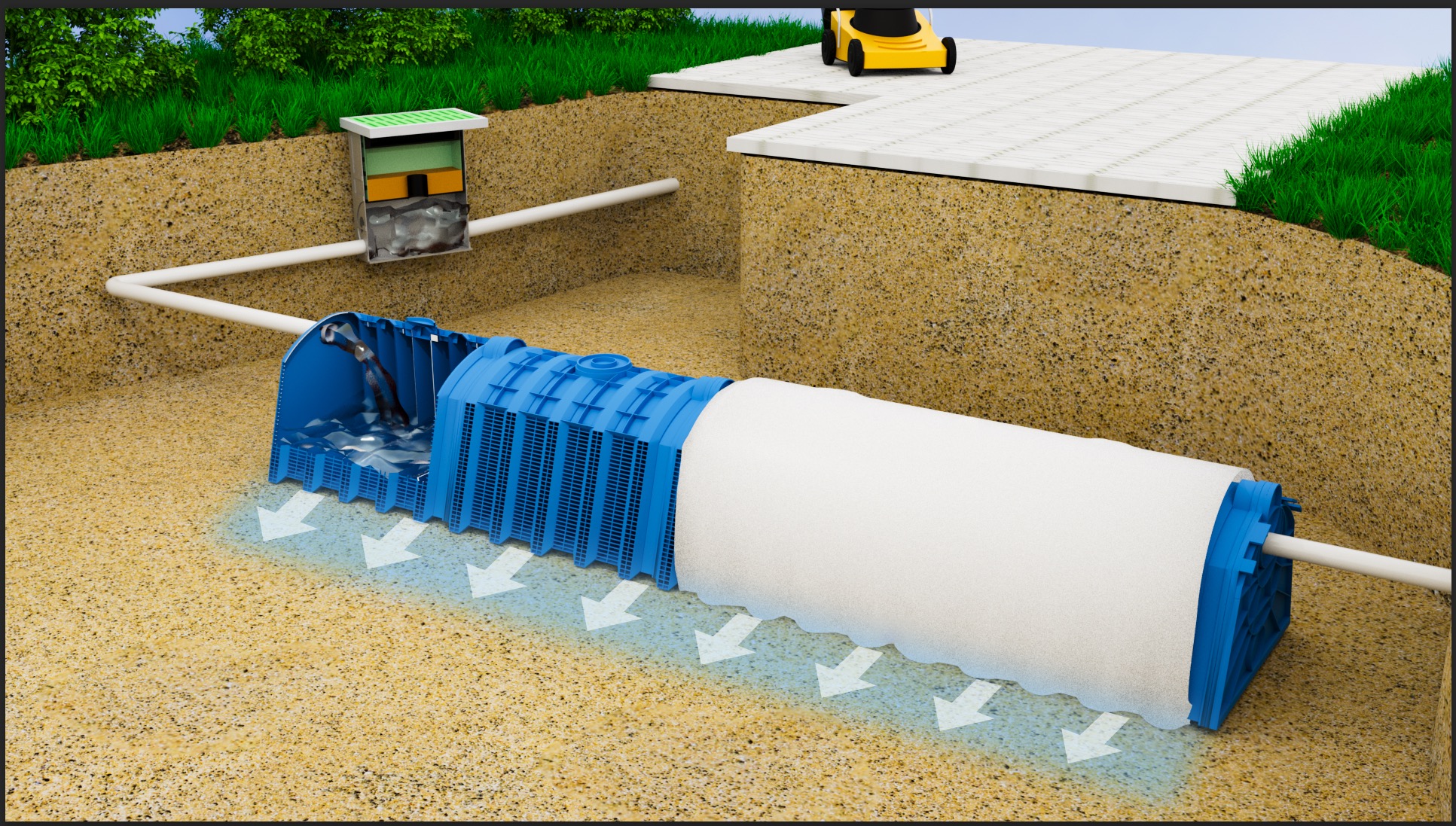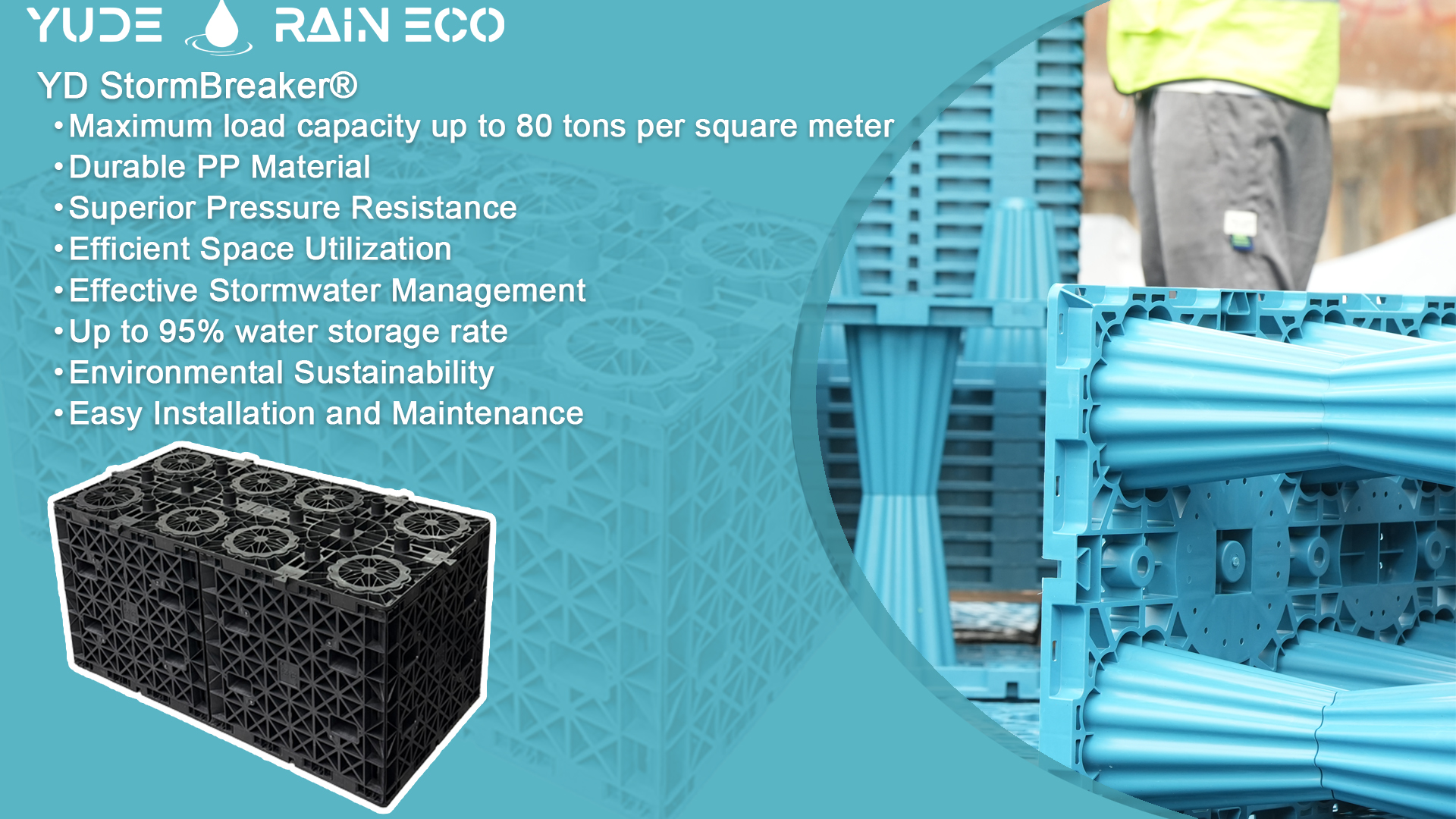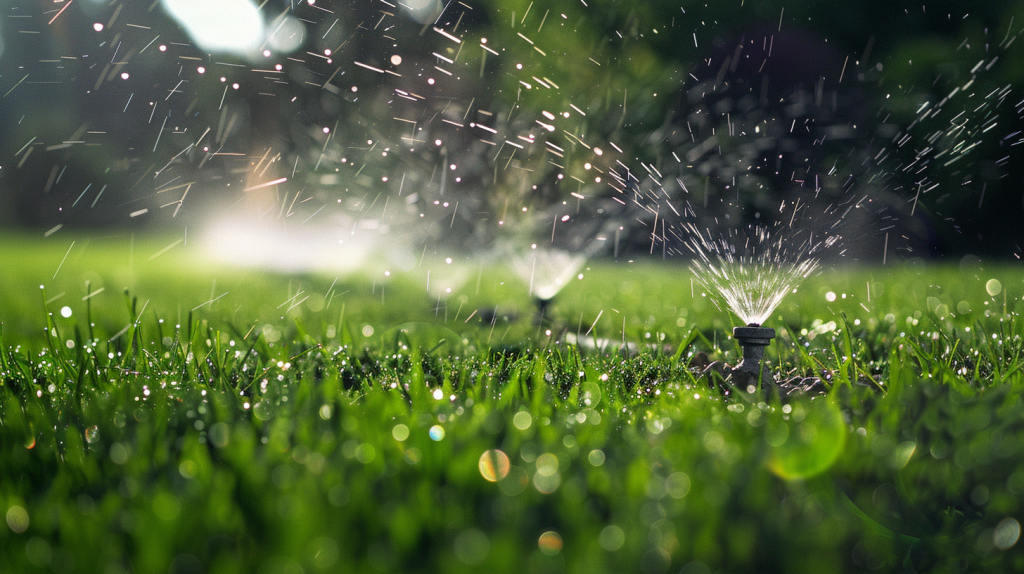The Importance of Roof Drainage
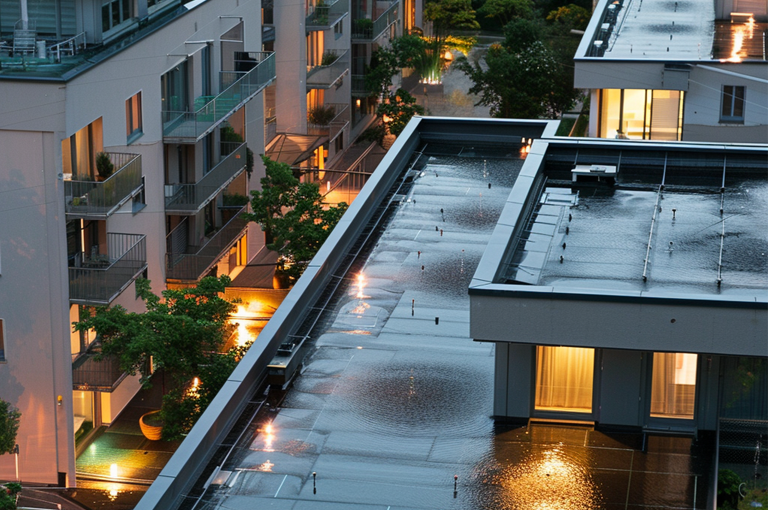
Introduction
Roof drainage is a cornerstone of modern architectural design and civil engineering. More than just diverting rainwater, an optimized roof drainage system protects a building’s long-term integrity, supports regulatory compliance, and contributes to sustainable water resource management. With the increasing frequency of extreme rainfall events, especially in urbanized areas, advanced solutions like siphonic drainage and underground stormwater attenuation tanks have become essential—not optional.
Why Roof Drainage Matters
1. Structural Protection and Longevity
Rainwater accumulation on rooftops poses a serious threat to the building envelope. Prolonged ponding leads to:
-
Accelerated membrane fatigue due to hydrostatic pressure and UV degradation.
-
Structural loading beyond design limits, especially on flat roofs, potentially causing deformation or collapse.
-
Foundation damage resulting from uncontrolled water runoff that infiltrates subgrade materials and compromises soil bearing capacity.
2. Prevention of Internal Water Damage
Without efficient drainage, water intrusion may occur through seams, parapets, or facade penetrations. This can result in:
-
Ceiling and insulation damage, leading to increased HVAC loads and decreased energy efficiency.
-
Mold proliferation, creating indoor air quality (IAQ) issues and long-term health risks.
3. Occupant and Site Safety
Effective roof drainage reduces risks such as:
-
Slip hazards caused by water pooling near entrances or walkways.
-
Ice dam formation in cold climates, which blocks drainage paths and adds dangerous roof loads.
4. Urban and Environmental Implications
-
Runoff management: Buildings in cities must mitigate their contribution to stormwater runoff to prevent overwhelming municipal drainage systems.
-
Soil erosion control: Controlled discharge minimizes washouts and sedimentation in adjacent green spaces or infrastructure.
-
Rainwater harvesting potential: With appropriate system design, roof runoff can be captured and reused for non-potable purposes.
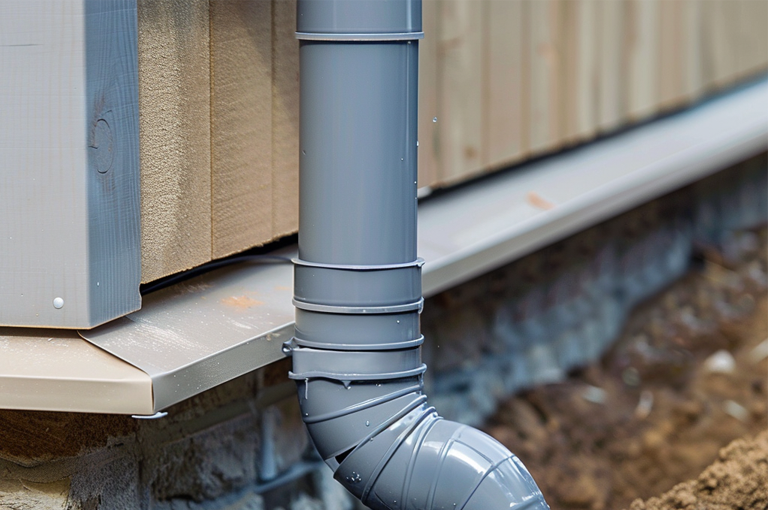
Why Do You Need a Siphon Drainage System? Overview and Uses
Introduction
A siphon drainage system efficiently manages rainwater and wastewater by using negative pressure to create a self-priming siphon effect for rapid water removal.
How Siphon Drainage Systems Work
Siphon drainage operates on differential pressure principles. Rainwater fills the pipes, creating a vacuum that generates high flow velocity, moving large water volumes quickly. Key components include:
Inlet Structures: Collect rainwater from roofs or surfaces.
Siphonic Pipes: Designed to create the siphoning effect.
Downpipes: Transport water from siphonic pipes to the ground or storage systems.
Outlet Structures: Discharge water into appropriate drainage systems or storage facilities.
Uses of Siphon Drainage Systems
Siphon drainage systems are versatile and efficient, used in various applications:
Roof Drainage: Ideal for large, flat roofs in commercial, industrial, and public buildings.
Urban Infrastructure: Manage stormwater runoff, reducing flooding risks and easing municipal drainage burdens.
Rainwater Harvesting: Integrate with systems for collecting and reusing rainwater.
Landscape and Agricultural Drainage: Manage surface water, prevent waterlogging, and maintain soil moisture levels.
Advantages of Siphon Drainage Systems
Benefits include:
High Efficiency: Rapid water removal reduces accumulation and damage risks.
Space Saving: Fewer pipes and smaller diameters save space and materials.
Cost-Effective: Lower material and installation costs.
Flexibility: Adaptable to various building designs and layouts.
Environmental Benefits: Effective stormwater management supports sustainable development.
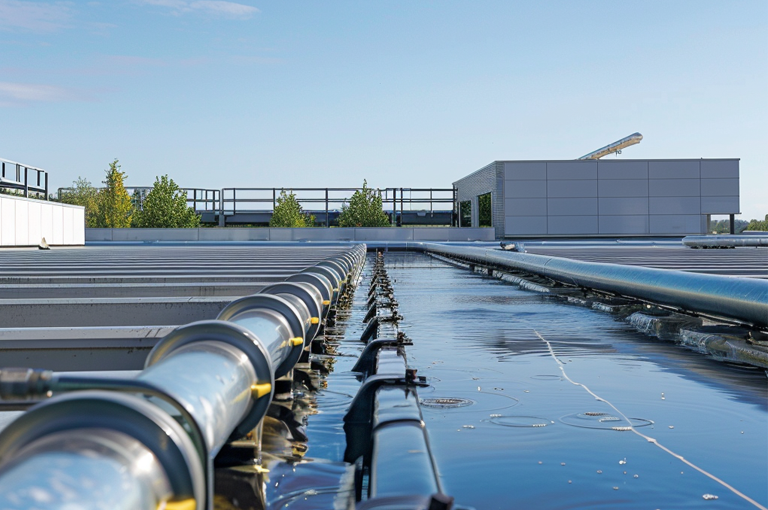
Application of Yude Rain Eco’s Siphon Drainage System
A. Large Commercial and Industrial Buildings
Reliable for managing significant rainwater volumes, preventing water accumulation and damage.
B. Flat and Low-Sloped Roofs
Effective water removal for buildings with susceptible roof designs.
C. Urban Developments
Crucial for stormwater management in densely populated areas, enhancing urban sustainability and resilience.
Benefits Summary of Yude Rain Eco’s Siphon Drainage System
| Feature | Description |
|---|---|
| Slope-Free Installation | Maximizes ceiling space and reduces structural work |
| High Drainage Capacity | Removes large water volumes in short timeframes |
| Material Savings | Fewer, smaller-diameter pipes reduce costs |
| Scalable Design | Easily integrates with attenuation tanks or reuse systems |
Stormwater Attenuation Crates: Subsurface Storage with Controlled Discharge
What Are They?
Stormwater attenuation crates—also called modular geocellular storage systems—temporarily store excess stormwater underground and release it at a controlled rate via an outlet or infiltration mechanism.
Technical Composition
-
Void Ratio: >90% for efficient volume storage
-
Material: PP or recycled HDPE, UV and chemical resistant
-
Load Capacity: Designed to withstand vehicular or pedestrian loads (32t–60t typically)
Functional Role
-
Peak flow reduction: Helps sites comply with stormwater d
-
Pollution control: Allows for sediment settlement or integration with treatment trains
-
Aquifer recharge: In infiltration designs, water is gradually returned to the subsurface.
Key Applications
-
Urban plazas, parking lots, industrial parks
-
Under-road installations to reduce surface space demand
-
LEED- and BREEAM-certified projects
What Are They?
Stormwater attenuation crates—also called modular geocellular storage systems—temporarily store excess stormwater underground and release it at a controlled rate via an outlet or infiltration mechanism.
Technical Composition
-
Void Ratio: >90% for efficient volume storage
-
Material: PP or recycled HDPE, UV and chemical resistant
-
Load Capacity: Designed to withstand vehicular or pedestrian loads (32t–60t typically)
Functional Role
-
Peak flow reduction: Helps sites comply with stormwater d
-
Pollution control: Allows for sediment settlement or integration with treatment trains
-
Aquifer recharge: In infiltration designs, water is gradually returned to the subsurface.
Key Applications
-
Urban plazas, parking lots, industrial parks
-
Under-road installations to reduce surface space demand
-
LEED- and BREEAM-certified projects
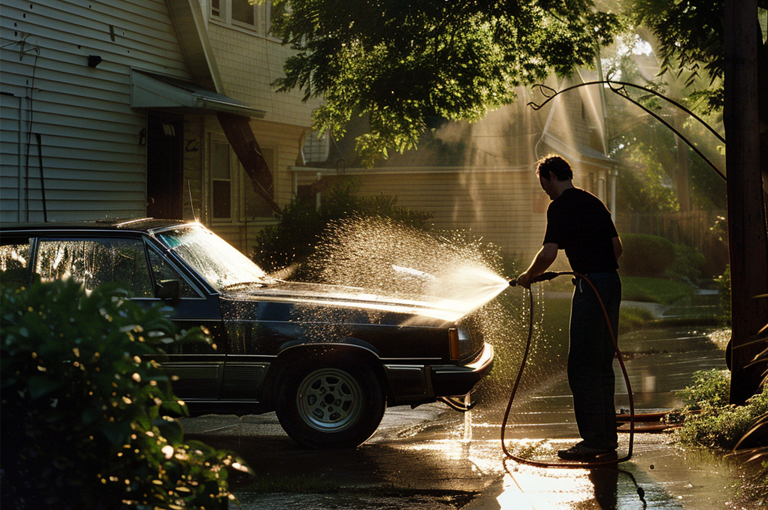
Reuse of Collected Rainwater: Practical and Sustainable
Non-Potable Use
-
Irrigation systems (landscape, green roofs)
-
Flushing toilets
-
Cleaning and vehicle wash
-
Process cooling water for industrial sites
-
Fire suppression reservoirs
Potable Use (Subject to Treatment)
When designed for human consumption, treatment typically involves:
-
First flush diverters
-
Multi-stage filtration (sand, activated carbon)
-
UV or ozone sterilization
-
Compliance with WHO or local water safety standards
Yude Rain Eco: Your Trusted Partner for Advanced Drainage Solutions
At Yude Rain Eco, we engineer comprehensive stormwater systems tailored to your site, region, and building function. Our solutions are backed by in-house technical design support, international export capabilities, and proven performance across commercial, industrial, and public sector projects.
Our Flagship Systems
| System | Description |
|---|---|
| YD StormAero® | Negative-pressure roof drainage for high-volume buildings |
| YD StormBreaker® | Geocellular tanks with selectable load ratings and configurations |
| YD StormVault® | Urban tree root-friendly systems with stormwater integration |
Contact Us Today
Ensure your next project is flood-resilient, regulation-compliant, and future-ready.
Partner with Yude Rain Eco to design and deploy roof drainage and stormwater systems that work in harmony with modern architecture and climate demands.
Contact Us | Serving Global Markets | ISO & Regional Certifications Supported
Q&A:Uses of Collected Rainwater: Potability and Reuse
1. Uses of Collected Rainwater?
A. Non-Potable Uses
Most commonly, collected rainwater is used for non-potable purposes.
Irrigation: Watering gardens, lawns, and agricultural fields.
Toilet Flushing: Reducing the demand on municipal water supplies.
Cleaning: Washing vehicles, outdoor surfaces, and windows.
Laundry: Using rainwater in washing machines.
Fire Suppression: Providing a water source for firefighting systems.
Cooling Systems: Using rainwater in industrial cooling processes.
Filling Ponds and Pools: Providing water for aesthetic and recreational purposes.
B. Is It Potable Uses?
For rainwater to be used for drinking (potable use), it must undergo appropriate treatment to meet safety standards. Treated rainwater can be used for:
Drinking Water: Providing a clean, safe water source.
Cooking: Preparing food safely.
Bathing and Showering: Ensuring safe personal hygiene.
2. Factors Affecting Potability?
Several factors influence whether collected rainwater can be made potable:
Collection Method: Cleanliness of the catchment area (e.g., roofs), gutters, and storage tanks.
Contaminants: Presence of pollutants, debris, bird droppings, and other contaminants.
Storage Conditions: Ensuring the tank is covered and protected from contamination.
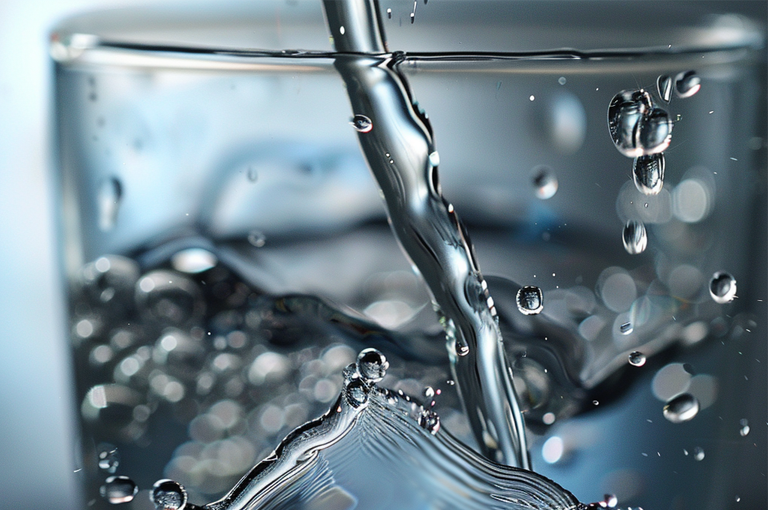
3. How To Treatment ?
To make rainwater potable, it must undergo several treatment steps:
Filtration: Removing large particles and debris.
Sedimentation: Allowing particles to settle out of the water.
Disinfection: Using methods such as chlorination, ultraviolet (UV) light, or ozone treatment to kill pathogens.
Additional Filtration: Using activated carbon filters to remove chemical contaminants and improve taste.
Benefits of Reusing Rainwater
| Benefit | Description |
|---|---|
| Water Conservation | Reducing reliance on municipal water supplies. |
| Cost Savings | Lowering water bills and reducing infrastructure costs. |
| Environmental Protection | Decreasing runoff and erosion, protecting natural waterways. |
| Sustainability | Supporting sustainable water management practices. |
Roof Drainage Systems
| Feature | Description |
|---|---|
| Structural Protection | Protect your building’s structure and foundation from water damage. |
| Safety Enhancement | Enhance occupant safety by preventing ice dams and slippery surfaces. |
| Legal Compliance | Comply with building codes to avoid legal issues. |
Siphon Drainage Systems
| Feature | Description |
|---|---|
| High-Efficiency Management | Achieve high-efficiency rainwater management for large and flat roofs. |
| Cost and Space Efficiency | Reduce material and installation costs while saving space. |
| Environmental Support | Support sustainable urban development and reduce environmental impact. |
Rainwater Attenuation Tanks
| Feature | Description |
|---|---|
| Flood Mitigation | Mitigate flooding and manage stormwater runoff effectively. |
| Reduced Burden on Municipal Systems | Reduce the burden on municipal drainage systems. |
| Promotion of Sustainability | Promote sustainable development and efficient water resource management. |
Combined Drainage Systems
| Feature | Description |
|---|---|
| Enhanced Efficiency | Enhance stormwater management efficiency and urban resilience. |
| Controlled Water Release | Prevent water buildup and manage controlled water release. |
Invest in advanced drainage systems with Yude Rain Eco to safeguard your building and contribute to a sustainable future. Our expertise in rainwater harvesting, sustainable water management, and urban infrastructure improvements ensures that your projects are both effective and environmentally friendly.
Contact Yude Rain Eco Now
Let Yude Rain Eco provide you with innovative solutions for rainwater collection, siphon drainage systems, and rainwater attenuation tanks. Ensure your building’s safety, compliance, and sustainability with our expert services.


